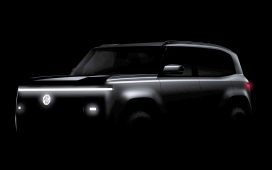The desired effect is mostly achieved. The engine revs quite freely up beyond 4000rpm, with generous and wide-spread torque. It is quiet enough under light loads too, and – while there’s a bit too much digital engine noise synthesis in the car, especially at full power – it’s still fairly rich and enticing to extend, and potent-feeling under your foot. The gearbox shifts smoothly and with intelligent timing, seemingly knowing when to hold a higher gear and when to drop it. It has a paddle-shift manual mode, whose shifts could be a little bit quicker, but they’re certainly fast enough not to offend.

It’s a shame that so much else about the Mazda CX-60 isn’t quite up to a commensurate level of richness or sophistication. The car’s cabin has a good driving position, offers adult-appropriate passenger space, and is appointed in a mix of quite appealing textiles and leathers – but also of cheaper-looking switches and mouldings in plenty of places. The haptic feel of key touch points – from exterior door handles to gear selector – is surprisingly plasticky and lightweight, and its doors close with a tinny clang. Cabin isolation on the move, from both wind and road noise, is also a little disappointing. And while the car handles and steers well for something of its type, it can ride in slightly sproingy, jittery, occasionally noisy fashion.
In so many ways, Mazda still clearly has a bit to learn about making really convincing, premium-level passenger cars. But in one respect in particular – a 3.3-litre six-pot diesel engine that feels ideal for towing and long-distance driving, and can return 50mpg easily and 65mpg if you try a bit – it’s now got a selling point that plenty of us, especially those of us who don’t pay benefit-in-kind tax, and who aren’t in a position to regularly charge an electrified alternative, could surely find a use for.











